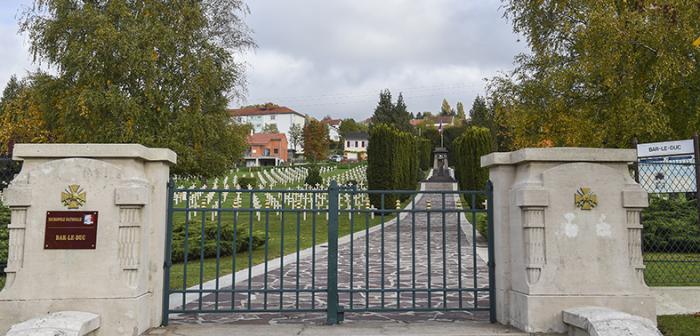
La nécropole nationale de Bar-le-Duc. © ECPAD
Pour accéder au panneau d'information de la nécropole, cliquer ici 
The French war cemetery of Bar-le-Duc holds the remains of 3,183 soldiers, 63 in ossuaries, who died for France during the battles of Verdun in 1914 to 1918, as well as seven British soldiers.
Created in 1914 this cemetery received bodies exhumed from military cemeteries in the Brionne region up until 1931.
Bar-le-Duc, prefecture of the Meuse became an administrative, military and medical centre during the Great War. Upon mobilization, some buildings were turned into army hospitals. The town hall hosted the headquarters, while the schools were used as billets for the troops. On the eve of the Battle of Verdun in 1916, thirteen medical teams provided care in the seven hospitals in the town. At the train station, an evacuation hospital (HOE) ensured the transfer of the wounded to the various medical facilities in the region, depending on the severity of the wounds. With the growing number of dead, a military cemetery was opened in 1915, at the site of the current national war cemetery. The town was not spared by the bombardments which caused many victims. In recognition of their sacrifices, André Maginot, Deputy of Bar-le-Duc and Minister of Pensions, gave the town the Military Cross on 30 July 1920.
In 1941 then in 1945, the bodies of soldiers and victims who died during World War II were brought together there. Among these men, there lie six French (including resistance fighters shot by occupation troops on 28 August 1944, on the esplanade of the Federation: Robert Lhuerre, Jean Pornot and Gilbert Voitier), a Belgian lieutenant, Armand Jacob, who died at Bar-le-Duc on 15 June 1940 (grave no. 793) and a Soviet, Constantin Maskaloff (grave 2804 A to D).